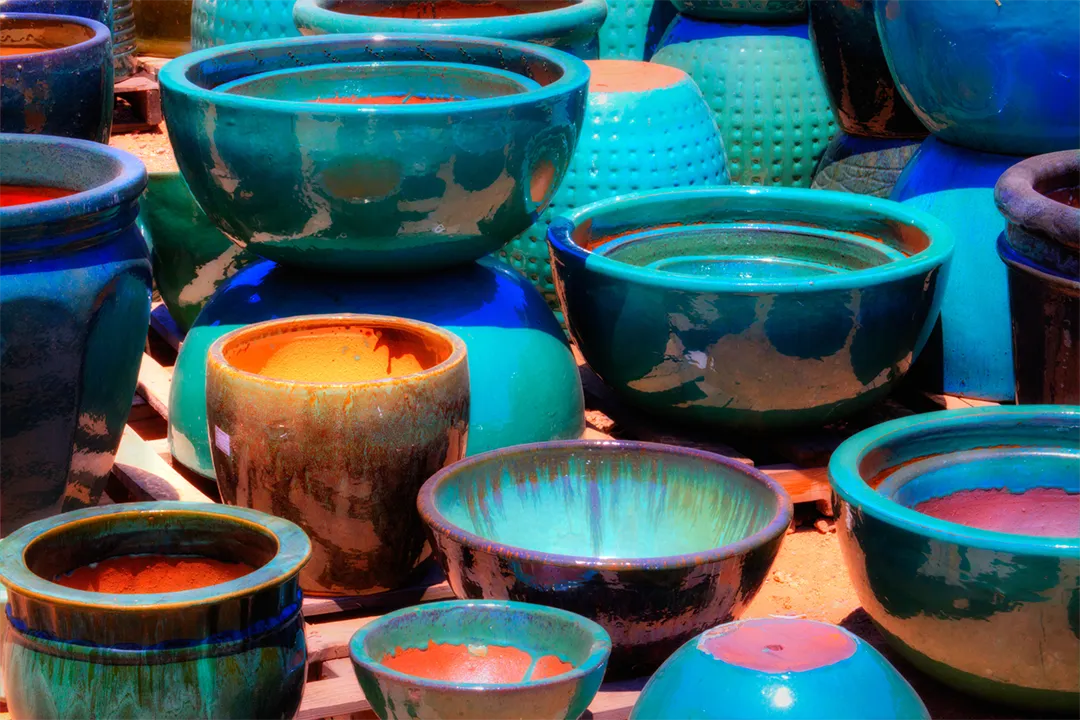
Selecting the right planters and pots is an essential part of plant design. This guide will help you choose plant containers to ensure the overall harmony of your space. Whether you’re adding patio plants to your outdoor lounge or using a plant design strategy to boost employee morale, the color, texture, size, and height of your planters matter.
Choosing planters and pots for interior plant design
1. Assess the style of your space
Before choosing a planter, analyze the design elements of your space. Is it modern and minimalist, rich with clean lines and neutral colors? Or does it lean toward traditional with ornate details and warm tones?
Identifying the style of your space will guide your choices. For example, perhaps your space is more eclectic, incorporating various textures and styles. Eclectic spaces come to life when plants are placed in both colorful ceramic pots and neutral woven plant baskets mixed throughout the room. If you’re working with a modern design style, consider sleek, geometric planters made of metal or concrete – perfect materials for patio plants. Traditional settings are often enhanced with plants in classic ceramic pots, stone containers, and terracotta planters, whereas minimalist designs call for neutral colors and simple shapes.
If you’re not sure what type of plant design works best for your space, our designers can help. When you’re ready to add patio plants to your outdoor space or indoor plant walls to an office complex, we’ll create custom work that showcases your property together.
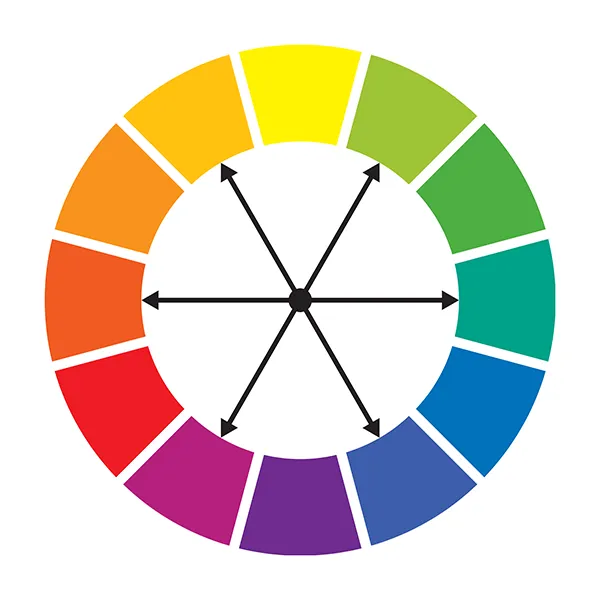
2. The impact of color on indoor planters
Color influences our emotional experiences and the ambiance of a space. Referring to the color wheel can help you select planter hues that blend with your palette or add contrasting pops of liveliness. Consider how you want you and your guests to feel in the space you’re designing, and ensure the plant design you choose achieves the desired tone.
The term “complementary colors” refers to colors opposite one another on the color wheel – they create high contrast and vibrant looks when used together. For example, green-leaf patio plants in deep red or burgundy planters creates a striking visual statement because red and green are complementary. Blue-green plants in rusty-orange terracotta pots evoke a radiant harmony, while highly contrasting shades, like bright yellow plants in dark-violet planters, create a stark, bold effect. Matte black, white, or gray planters provide a neutral balance that suits almost any setting without overwhelming the space.
3. Shapes and forms in plant design
The outlines and shapes of your planters should echo the elements in your space. Geometric shapes like rectangles and triangles complement modern and minimalist environments. If your space contains angular furniture, squared passageways, and edgy accents, consider planters that also showcase defined, straight lines.
A space filled with organic forms, such as rounded archways, asymmetrical furniture, and curved artwork would benefit from planters that have similar features – circular shapes, meandering lines, and softer edges.
Find the perfect planter for your space
Want expert help in selecting the right planters? Let’s create a custom plant design that fits your style.
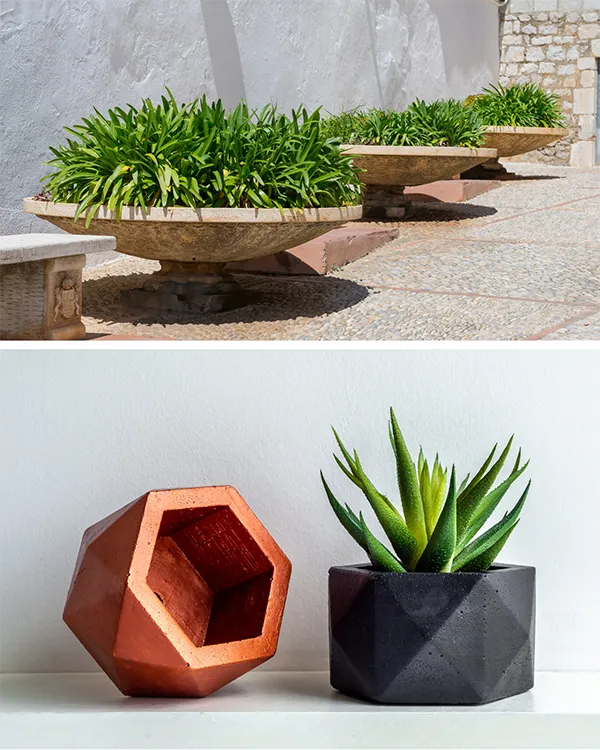
Choosing outdoor planters and pots for patio plants
1. Encase patio plants in durable materials
Choosing the right materials for patio plants is crucial for longevity. Outdoor planters must withstand varying weather conditions. Concrete and stone planters are durable and heavy, making them ideal for outdoor patios exposed to wind and high traffic. For less windy areas, fiberglass and resin planters provide a lightweight alternative that resists weather damage. Metal planters, such as stainless steel or powder-coated aluminum, also withstand outdoor elements while adding a modern touch that universally complements most outdoor spaces in Arizona. See an extensive list of planter materials in the next section.
2. Size and placement considerations for patio plants
Outdoor spaces require planters that enhance rather than overwhelm the environment. Large open patios benefit from oversized planters that help define seating areas and direct foot traffic. However, narrow walkways and small outdoor lounges should incorporate tall, slender planters that maximize vertical space and don’t crowd surrounding elements. Arranging planters in clusters of different heights creates a dynamic and visually engaging setting, provides shade to plants lower to the ground, and assists with noise reduction.
3. Place patio plants in plant stands for variety
Plant stands lift patio plants to different heights, adding dimension and variety to outdoor plant displays. Placing plants at various elevations prevents visual monotony and – like clustering – provides shade for plants lower to the ground. Black metal curves arranged into plant stands work well for sleek, contemporary patios, while wooden ladder stands provide a rustic charm suited for casual outdoor lounges and smaller walkways. Pedestal stands highlight statement plants, creating focal points in waiting areas or entryways.
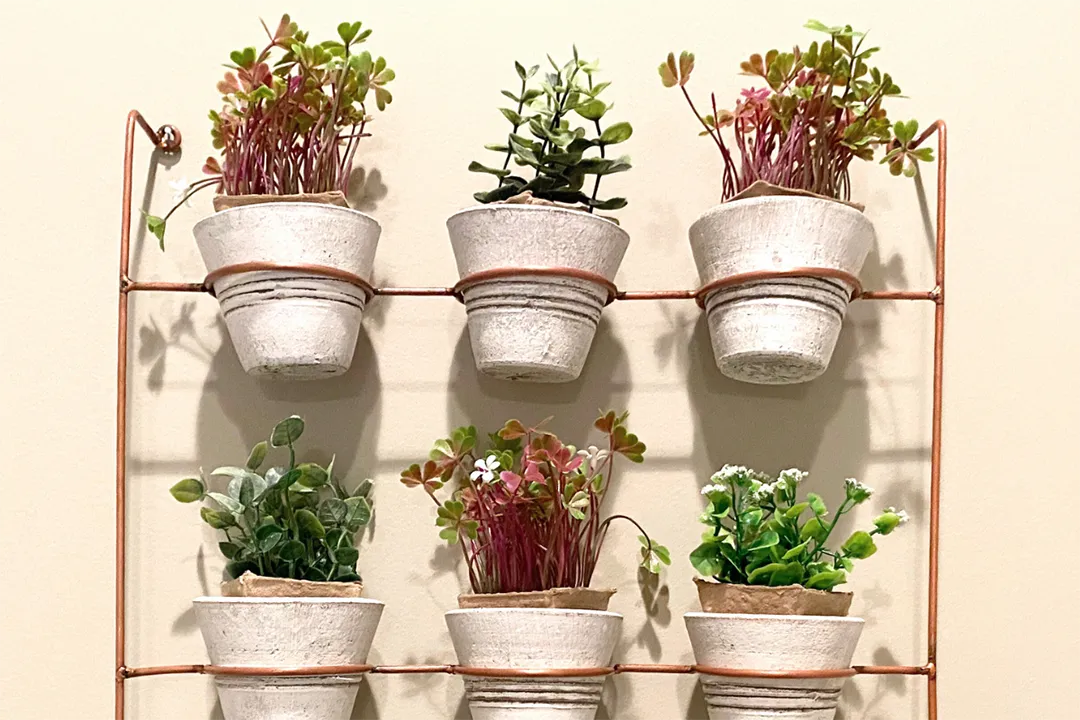
The importance of drainage and planter materials
Before we delve into the various materials available for planters, we must talk about the importance of drainage for healthy plants. All plant containers must have a drainage hole to prevent water from accumulating, which can lead to root rot. While adding a layer of gravel at the bottom is a great idea, it doesn’t replace the need for drainage holes.
When purchasing a planter, check to see if a drainage hole needs to be created in the bottom. For containers without drainage holes, use a drill to create as many as needed. Larger containers require multiple holes to ensure excess water is completely emptied. Standard drill bits work for plastic containers, while glass or ceramic bits are recommended for terracotta, clay, or ceramic pots.
Planters can be made of many different materials. The material of your plant containers should be functional and aesthetically aligned with your plant design vision. For example, metal planters provide a sleek, industrial vibe, ideal for contemporary offices, where as terracotta clay pots add a classic, earthy touch that’s perfect for traditional spaces. Fiberglass and resin are lightweight and durable, making them ideal for high-traffic areas, while wooden and woven baskets add warmth and texture – a great choice for bohemian or rustic settings.
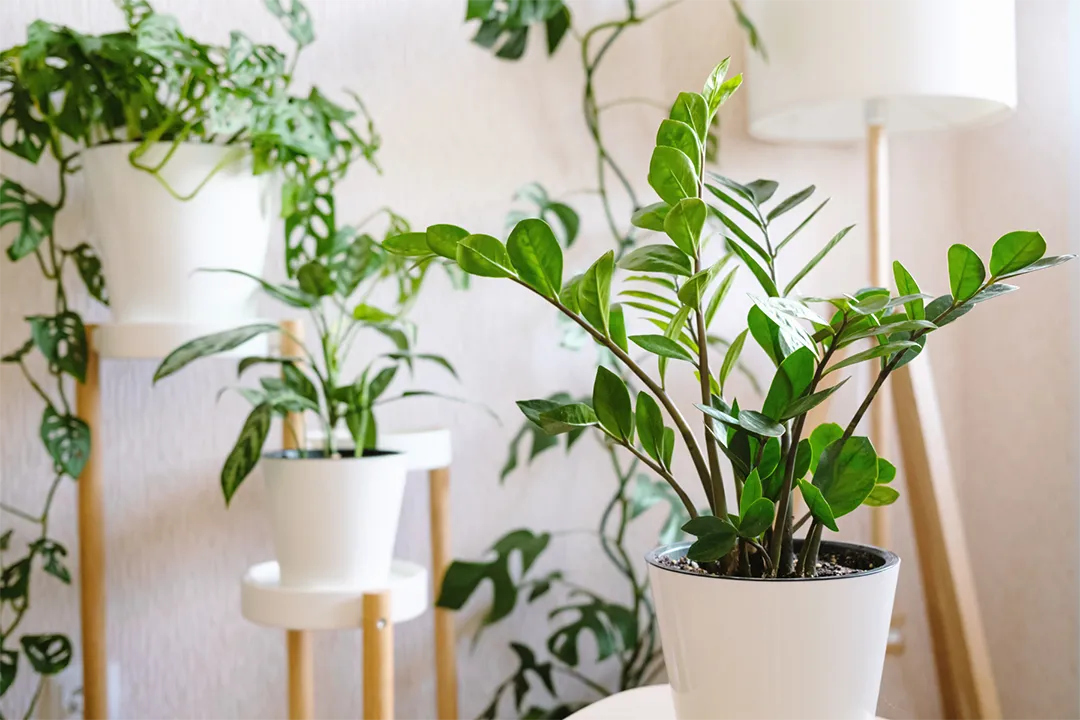
Below is a list of the most common types of plant containers and the pros and cons of each:
- Ceramic and terracotta planters. These classic, elegant plant design options are breathable for plant roots and available in glazed and unglazed options. Glazed pots tend to be more durable and less prone to weather damage over the years, perfect for patio plants. The downside? Ceramic pots are breakable, and excessive heat can cause soil to dry out more quickly. Overall, ceramic pots are a popular choice for all types of plant design and complement spaces with a traditional, southwestern, or Mediterranean style.
- Fiberglass & resin planters. These popular planters are lightweight, durable, weather-resistant, and come in various colors and finishes. On the downside, some cheaply made resin planters can fade over time in direct sunlight, so it’s essential to invest in high-quality plants to ensure longevity. Generally, they’re a great pick for modern indoor spaces and patio plants.
- Metal, aluminum, and steel planters. Metal planters are a nice modern and industrial-style choice for plant design. These sleek, contemporary containers are highly durable, heavyweight, and rust-resistant when appropriately treated. Something to be aware of is their tendency to overheat in direct sun. They may also corrode over time if rust-resistant coating isn’t applied prior to use.
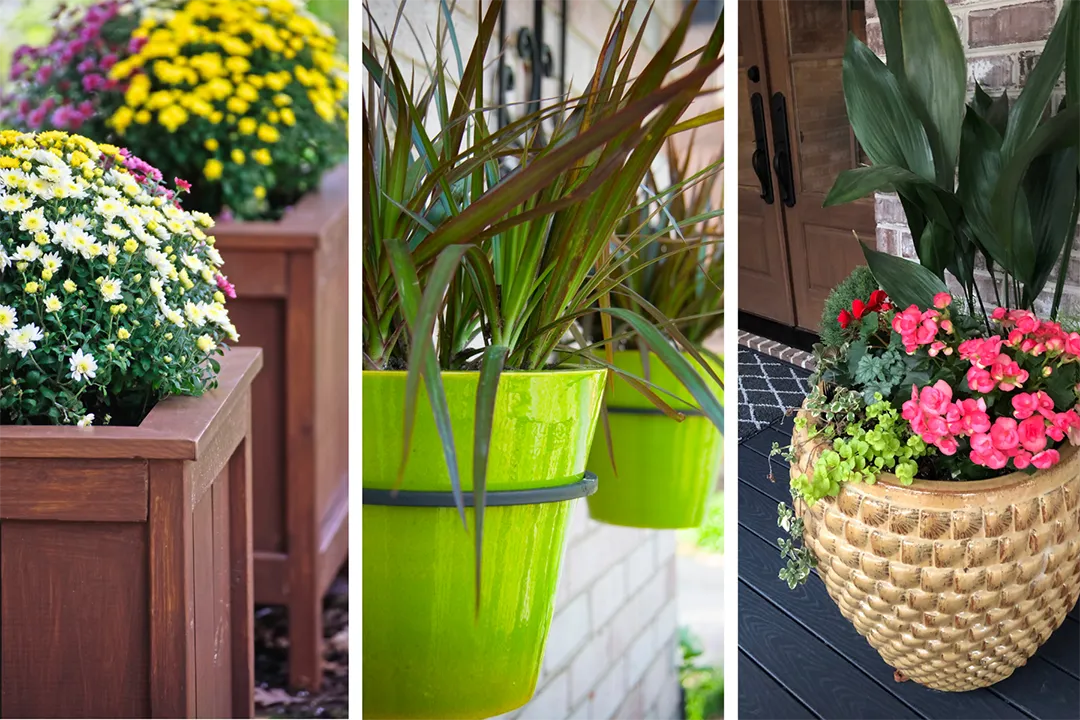
- Concrete and stone planters. Heavy-duty concrete planters are excellent for outdoor use and stabilize large plants and small trees. Because they are extremely heavy, they are very difficult to move and can be expensive. They are best for outdoor areas, large patio plants, and poolside landscapes.
- Wood and bamboo planters. Natural, lightweight, wooden planters can be custom-built to any size. They’re perfect for a rustic look, an eclectic collection of plant containers, and small plants that will eventually grow into larger planters. Unfortunately, they are susceptible to rot if the wood is not treated properly and may require routine maintenance. They are the perfect choice for an indoor bohemian, rustic, and eco-friendly plant design.
- Planters made of plastic and recycled materials. Plastic planters are affordable, lightweight, and versatile in design and color. They come in various shapes, sizes, and textures. They have a few downsides: they are not sustainably manufactured and may become brittle when placed outdoors in direct sunlight. If you plan on using them for your patio plants, be sure the container walls are thick enough to support the weight of the wet soil inside them. Ultimately, they’re a budget-friendly option for both indoor and outdoor plant arrangements.
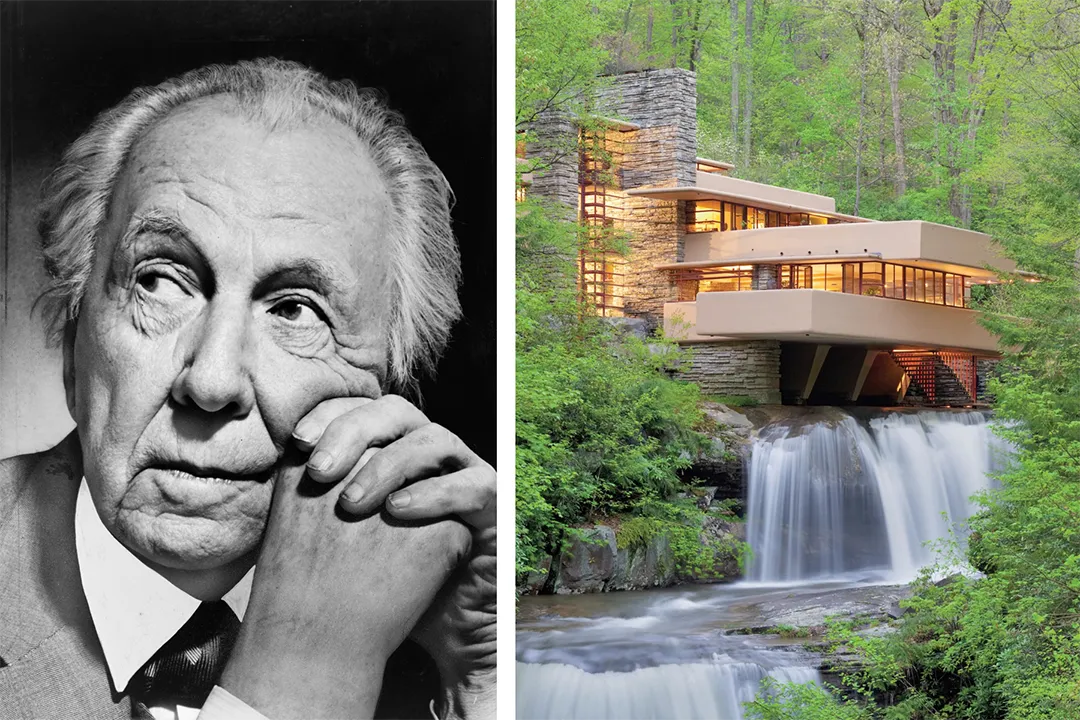
Frank Lloyd Wright shares wisdom on biophilic design
The famous architect Frank Lloyd Wright once said, “Study nature, love nature, stay close to nature. It will never fail you.” Like all natural elements, properly chosen plants and containers can make spaces feel inviting and alive – this is the foundation of biophilic design. By carefully selecting the right planters, you ensure your plant design creates a thriving, beautiful environment and connects people to nature.
Whether you’re considering a custom plant design plan for your CSR goals or seeking to increase revenue with patio plants, the perfect planter choice will elevate both the plants and the surrounding space. If you need help selecting the ideal planter for your business, Plant Solutions is here to help!
Let our designers craft a tailored plant solution for your home or business. Fill out the form below, and we’ll be in touch!
